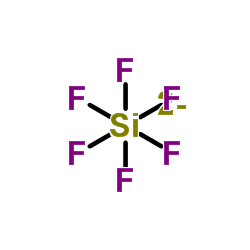Single-crystalline ceramic whisker-reinforced carboxylic acid-resin composites with fluoride release.
H H Xu, F C Eichmiller, J M Antonucci, G M Flaim
文献索引:Oper. Dent. 25(2) , 90-7, (2000)
全文:HTML全文
摘要
Currently available glass-ionomer, resin-modified glass-ionomer, and compomer materials have relatively low strength and toughness and, therefore, are inadequate for use in large stress-bearing posterior restorations. In the present study, ceramic single-crystalline whiskers were mixed with fluorosilicate glass particles and used as fillers to reinforce experimental carboxylic acid-resin composites. The carboxylic acid was a monofunctional methacryloxyethyl phthalate (MEP). Five mass fractions of whisker/(whisker + fluorosilicate glass), and corresponding resin (resin + MEP), were evaluated. Four control materials were also tested for comparison: a glass ionomer, a resin-modified glass ionomer, a compomer, and a hybrid composite resin. Flexural specimens were fabricated to measure the flexural strength, elastic modulus, and work-of-fracture (an indication of toughness). Fluoride release was measured by using a fluoride ion selective electrode. The properties of whisker composites depended on the whisker/(whisker + fluorosilicate glass) mass fraction. At a mass fraction of 0.8, the whisker composite had a flexural strength in MPa (mean +/- sd; n = 6) of 150 +/- 16, significantly higher than that of a glass ionomer (15 +/- 7) or a compomer control (89 +/- 18) (Tukey's multiple comparison test; family confidence coefficient = 0.95). Depending on the ratio of whisker:fluorosilicate glass, the whisker composites had a cumulative fluoride release up to 60% of that of a traditional glass ionomer. To conclude, combining ceramic whiskers and fluorosilicate glass in a carboxylic acid-resin matrix can result in fluoride-releasing composites with significantly improved mechanical properties.
相关化合物
| 结构式 | 名称/CAS号 | 分子式 | 全部文献 |
|---|---|---|---|
 |
氟硅酸
CAS:16961-83-4 |
H2SiF6 |
|
Effects of ammonium hexafluorosilicate concentration on dent...
2010-01-01 [Dent. Mater. 26(1) , 29-34, (2010)] |
|
Microtensile bond strength of two single-step adhesive syste...
2001-07-01 [J. Adhes. Dent. 3(2) , 129-36, (2001)] |
|
Hypoxic pulmonary vasoconstriction is not potentiated by rep...
1985-12-01 [Anesthesiology 63(6) , 608-10, (1985)] |
|
Community health effects of a municipal water supply hyperfl...
1988-06-01 [Am. J. Public Health 78(6) , 711-3, (1988)] |
|
Recovery of high surface area mesoporous silica from waste h...
2010-01-15 [J. Hazard. Mater. 173(1-3) , 576-80, (2010)] |